The FA Cup provides the opportunity for clubs of different leagues to battle each other for eternal glory. This was exactly the case when mid-table Championship side Millwall hosted their FA Cup match against Premier League side Everton. A last-minute winner from Millwall saw them reach the next round with a 3-2 victory over Everton.
In this tactical analysis, we will look at three tactical trends supported with statistics. We will look at how Millwall set themselves up defensively. Then we will have a look at how Everton tried to attack. Lastly, we will have a look at how Millwall’s passing style was key to their success.
Teams
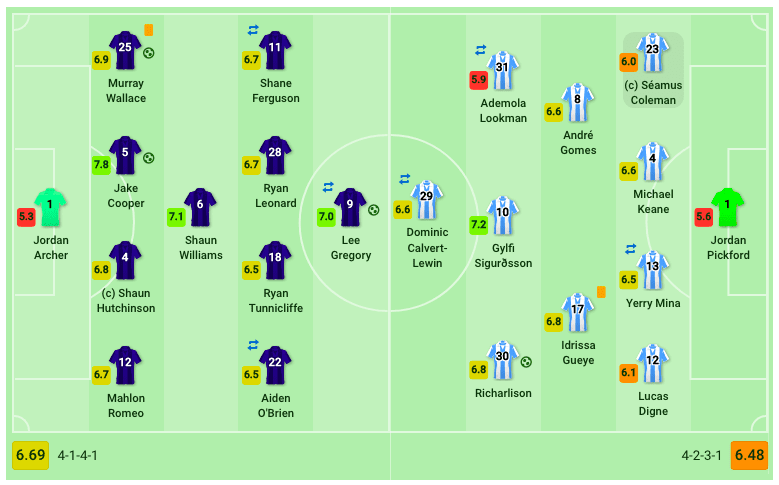
Neil Harris’ side started the game with a 4-1-4-1 formation, which they maintained throughout the game. Millwall opted for a strong back four with Murray Wallace, Jake Cooper, Shaun Hutchinson, and Mahlon Romeo. This back four was supported by Shaun Williams who had a critical role, playing in front of the defence. Lee Gregory played as the sole striker but supported by a four-man midfield.
Marco Silva started with a 4-2-3-1 formation and kept it this way the whole game. Everton played with a low defensive block in front of the back four, consisting of Idrissa Gueye and Andre Gomes. Dominic Calvert-Lewin was the striker supported by Richarlison and former RB Leipzig loanee Ademola Lookman on the right flank.
Millwall’s defence
When playing against a Premier League team, Millwall’s defence needed to be organised and disciplined. They played a 4-1-4-1 formation which suited them in both defence and attack, but we will focus on the defence here.
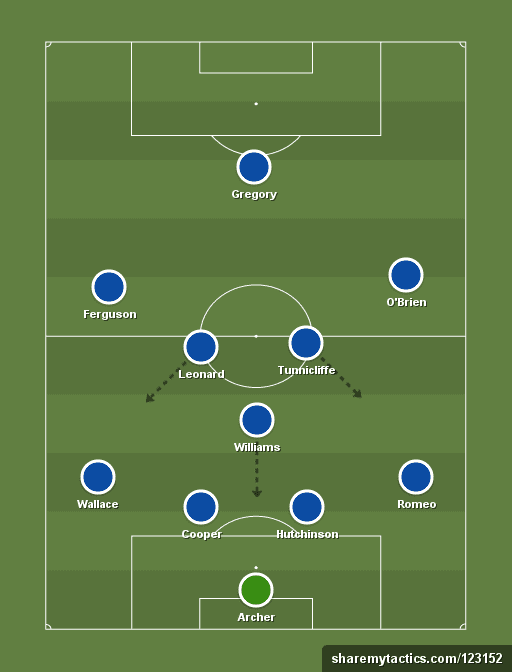
The back four of Wallace, Cooper, Hutchinson and Romeo was key to the defensive success in this game, even though they conceded two. This back four remained the same and had little intention to make endless runs forward. When under pressure from Everton, they stood their ground and got support from Williams, who had a special role. He posed as the fifth defender in defensive formation.
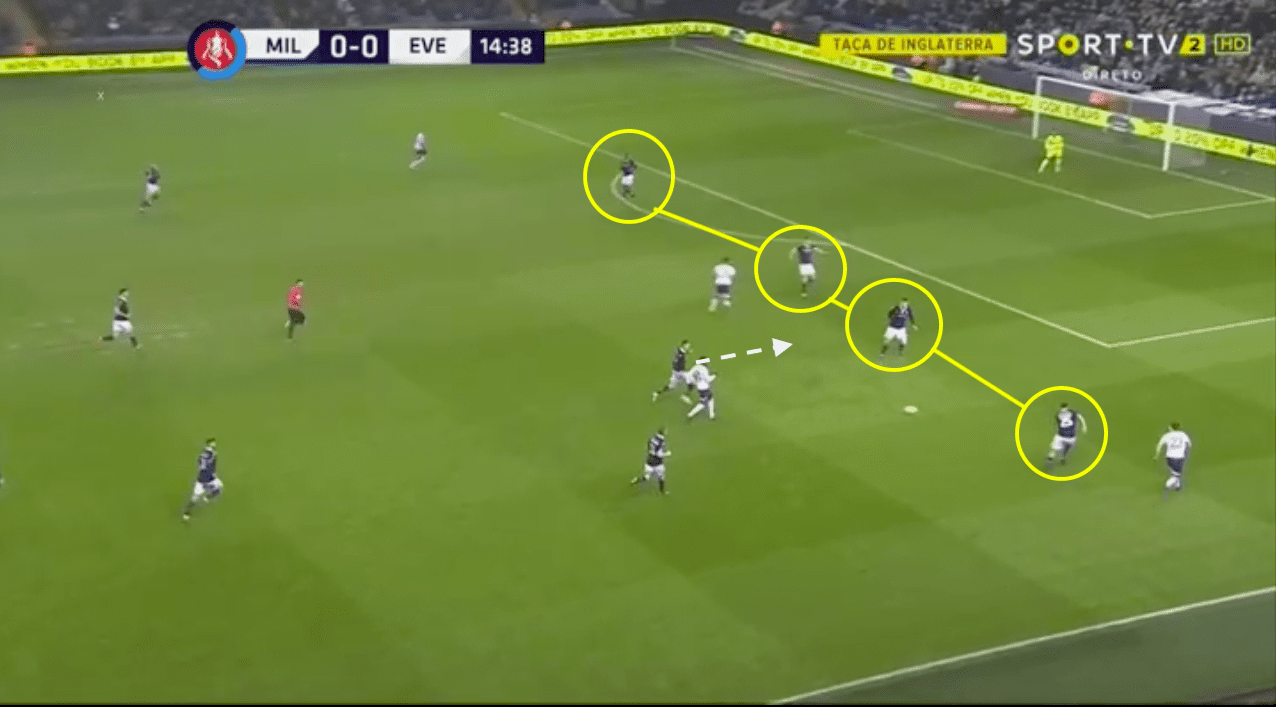
Millwall’s back four played on one line and moved as one collective unit, as you can see above. When they were under huge pressure, they not only got support from Williams, but the midfielders also came in to support. Ryan Leonard and Ryan Tunnicliffe in the middle would drop back, as would Shane Ferguson and Aiden O’Brien on the flanks. Later on, they were substituted, and Jiri Skalak and Steve Morison came on.
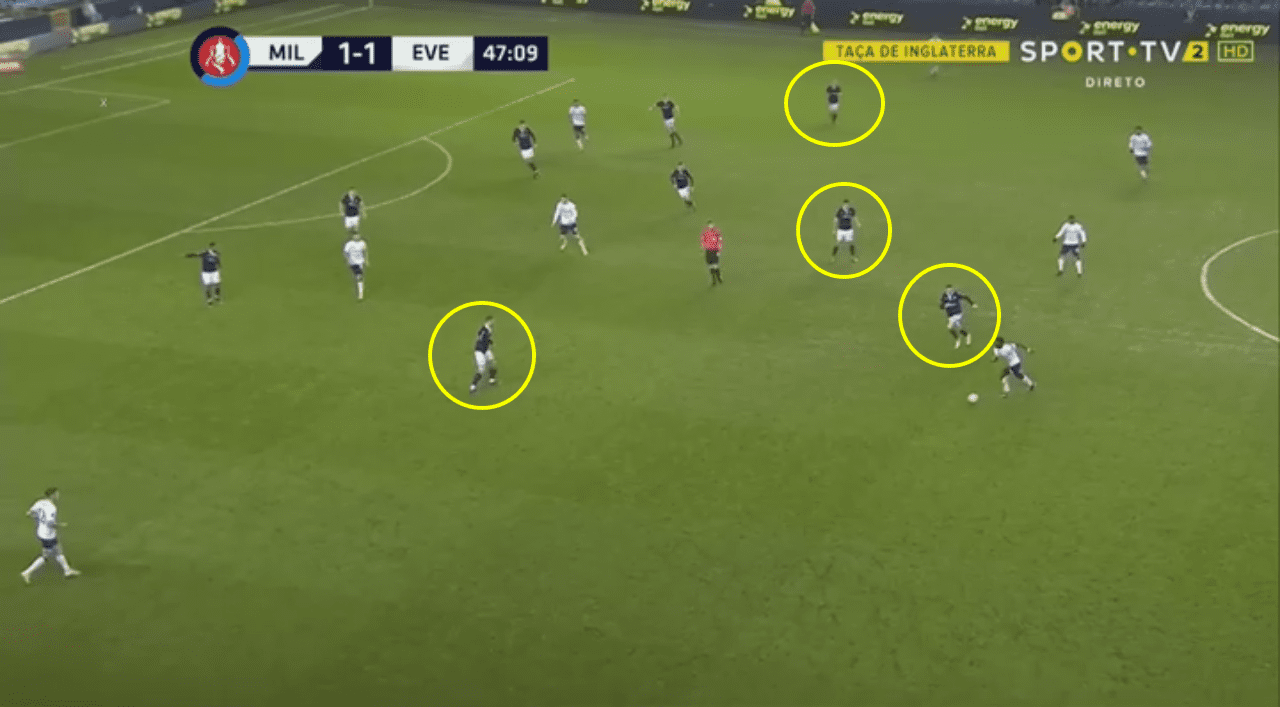
Neil Harris’ team found its stability from the back and had a well-organised defence, which was needed against an attacking Everton outfit. The fact that the midfielders were coming back to offer their support made it easier for Millwall to stay in the game.
Everton attacking from the flanks
As a Premier League outfit, Everton came to the Den to attack and had a different approach to their opponents. They started with a 4-2-3-1 formation with deep-lying midfielders.
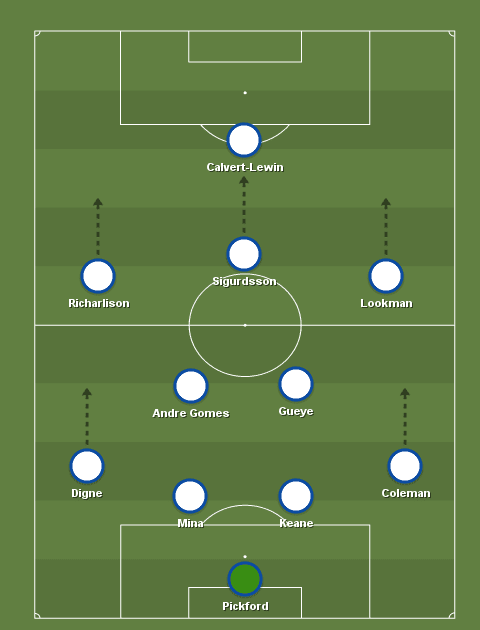
Calvert-Lewin played as the sole striker, but Everton also played with three attacking midfielders. Richarlison and Lookman on the wings made runs towards the box, joining Calvert-Lewin when Everton were in attack.
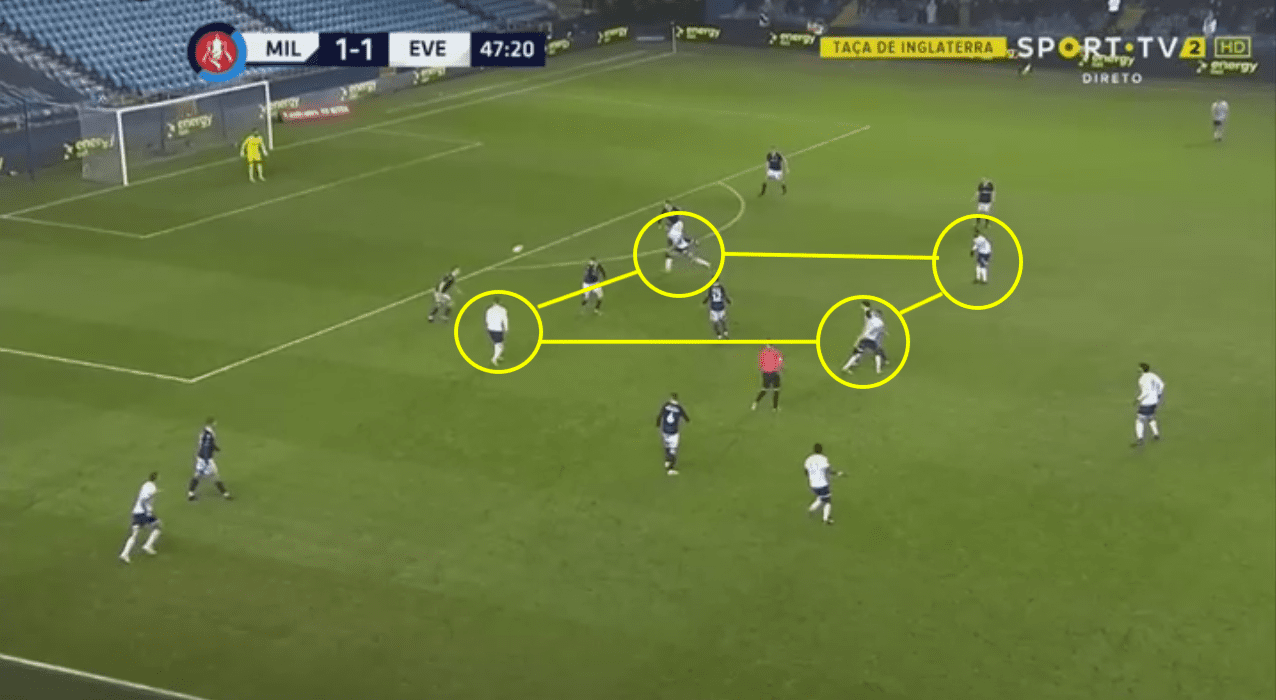
In attack, the attacking midfielders Richarlison, Sigurdsson and Lookman join Calvert-Lewin. They make runs towards the box, leaving room on both flanks. This was intentional, as the full-backs then could make runs down the line.
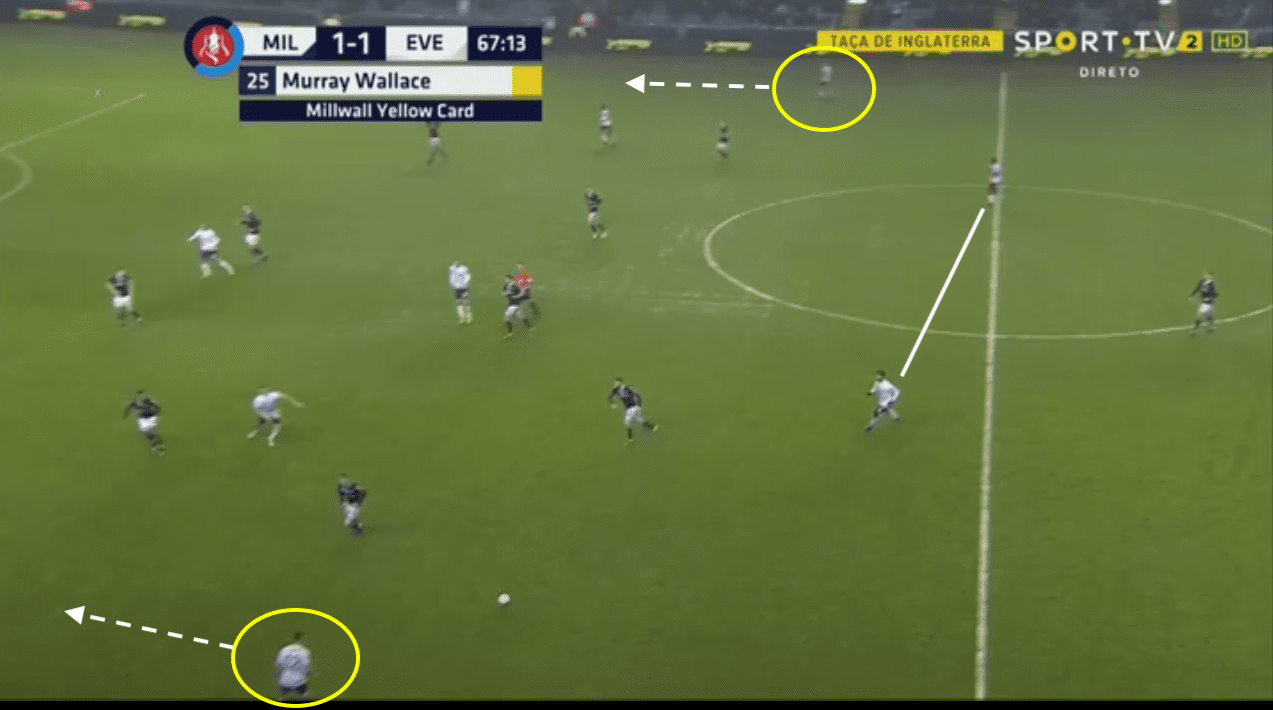
As the above and below images show, Digne on the left and Coleman on the right make runs down the line before trying to cross to the attacking midfielders and Calvert-Lewin. Their attacking intentions are strengthened by the upcoming defensive block of Andre Gomes and Gueye.
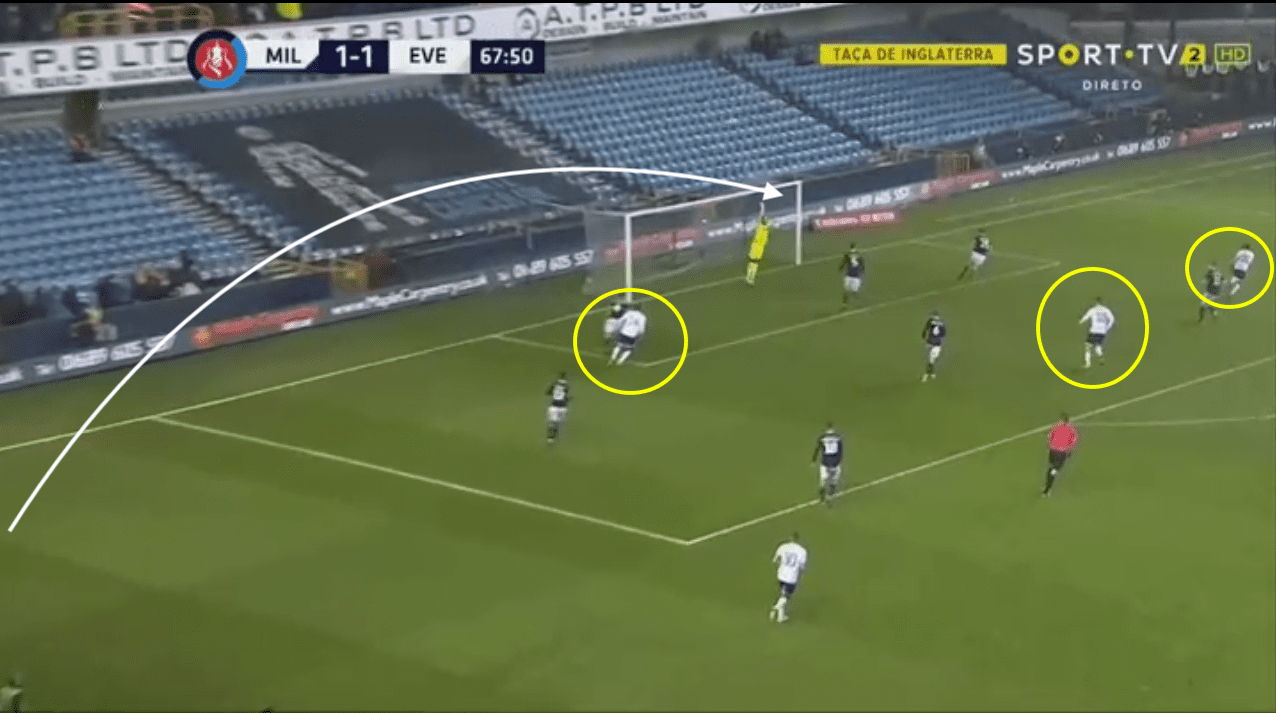
Everton tried to play this attacking football a lot but were quite unlucky with their crosses, as you can see above. They constantly had three players in the box ready to attack the crosses, but most were not successful. Of their 21 crosses, only five reached their players.
Millwall’s passing style
Everton were dominant in this game with 65% ball possession. However, Millwall still managed to score three goals against the Premier League side. All of them were produced through set pieces, but Millwall’s passing style was what made their attack dangerous in front of the Everton defence.
Millwall made 225 passes throughout this game, of which 148 were accurate. This number was significantly lower than their opponents (429/338). The biggest difference between the teams was that Millwall had a greater percentage of long balls and a lower percentage of lateral passes, as you can see from their pass map below.
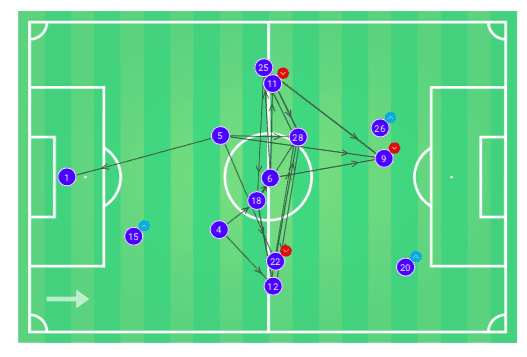
A lot of the passes made during this game, according to this pass map, were long balls. Many came from keeper Jordan Archer to the midfield, but most importantly from the midfield to striker Gregory. He tried to keep the ball until support arrived to further their attack or head the ball to a running midfielder. At other moments one of the midfielders would head the ball to striker Gregory, who tried to convert the chances.
A good example of that style of play is the equaliser by Millwall in the first half. It’s a set piece that leads to the goal, but the play is quite similar.
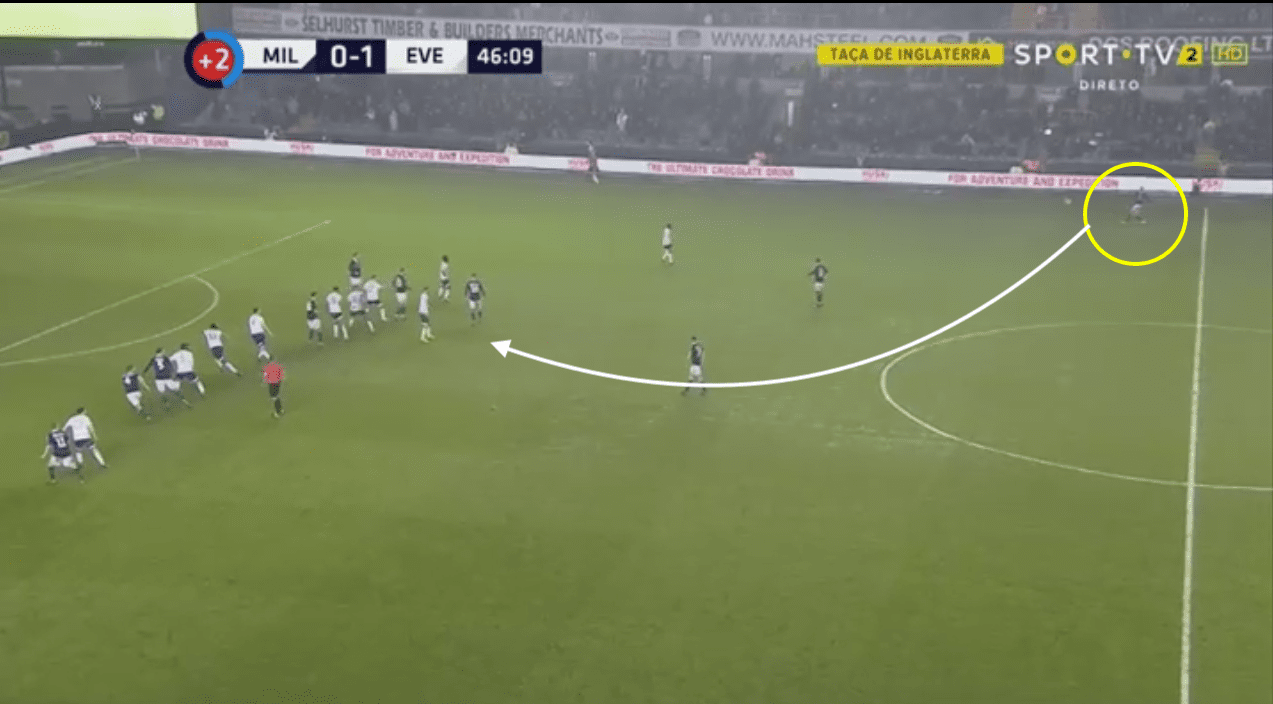
The free kick is taken long into the box, where seven Millwall players are present. The intention is to get the ball to one of those players who will head it through, to create a chance in front of goal.
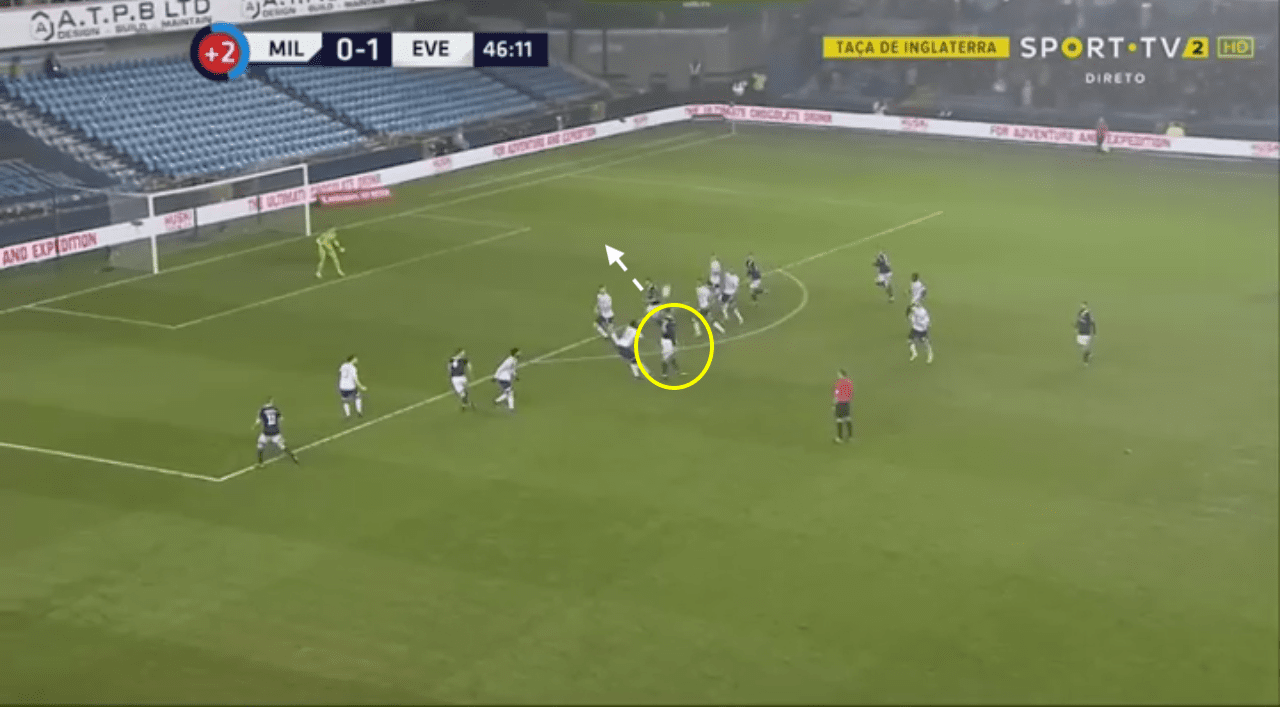
Because of the numbers Millwall have up front during this free kick, the chance that a player could head it through is quite big. In this case Cooper manages to head the ball into an area Gregory is attacking.
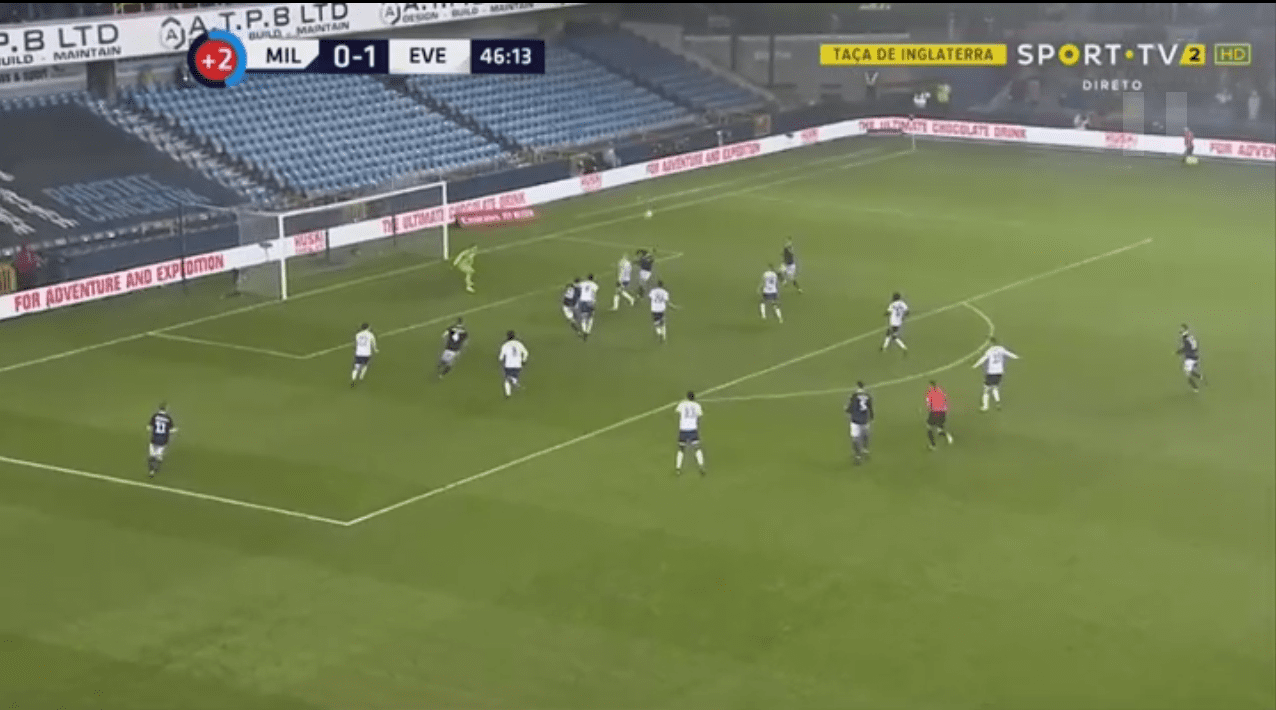
Gregory anticipates this header by Cooper well, and scores the equaliser with his own header.
Conclusion
Everton were dominant on the ball and had a very clear idea of how they wanted to attack against this defensive Millwall side. They made many runs down the line, but their end product was off a lot of the time. Millwall conceded two, but concentrated on long balls and set pieces. They did that exceptionally well and managed to exploit the poor Everton defence during those set pieces. Thanks to this, they were able to go through to the next round of the FA Cup.
If you love tactical analysis, then you’ll love the digital magazines from totalfootballanalysis.com – a guaranteed 100+ pages of pure tactical analysis covering topics from the Premier League, Serie A, La Liga, Bundesliga and many, many more. Buy your copy of the January issue for just ₤4.99 here, or even better sign up for a ₤50 annual membership (12 monthly issues plus the annual review) right here.

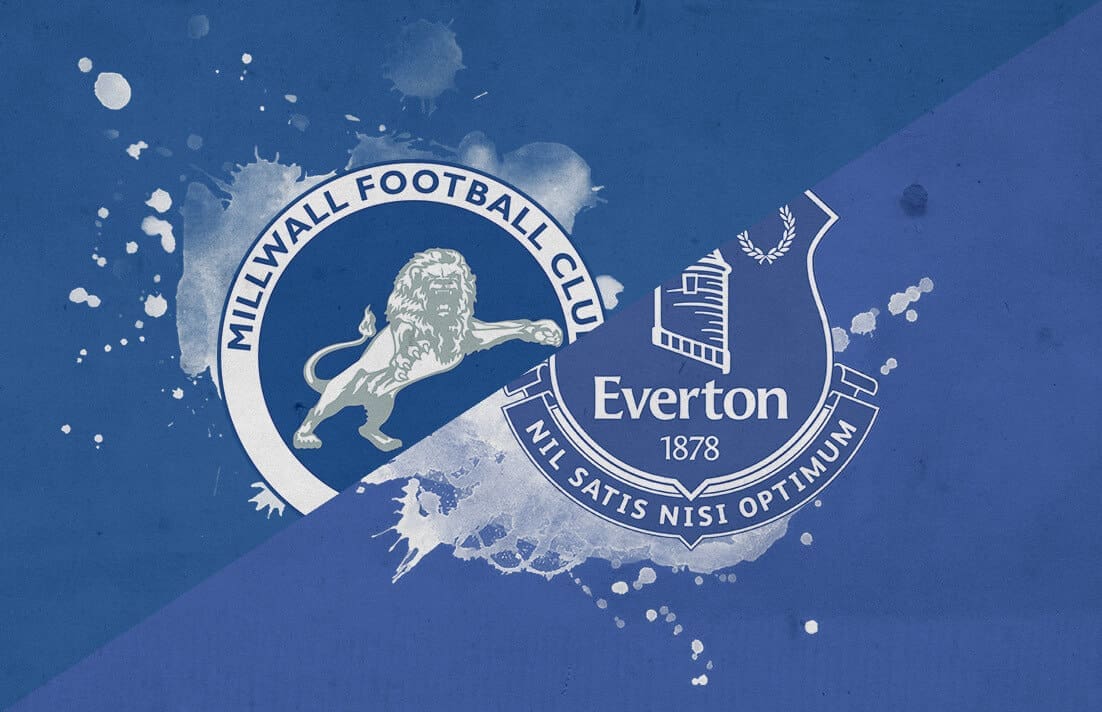



Comments